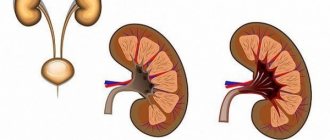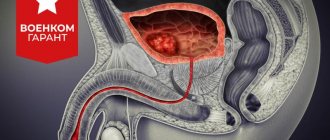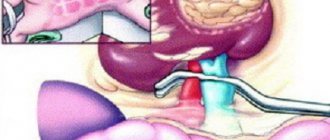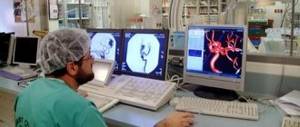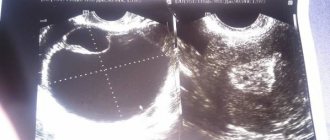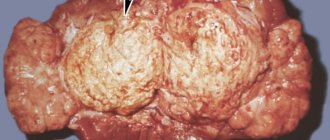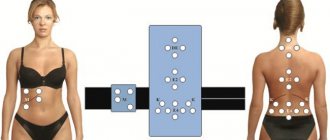Do they take into the army with a horseshoe kidney? | Recruit Assistance Service
Kidneys perform important functions, without which a person cannot live a full life.
They remove harmful substances from the body, maintain fluid balance and help regulate blood pressure. It is possible to live without kidneys, but a person will have to make friends with hemodialysis - artificial blood purification. Therefore, kidney diseases and anomalies occupy a special place in the Schedule of Diseases. The list of common anomalies includes a horseshoe kidney. Such a change in most cases leads to the development of concomitant renal diseases: nephrolithiasis (formation of stones), hydronephrosis (dilation of the pelvis and calyces due to impaired outflow of urine) and renal failure. Incorrect placement of organs can also lead to diseases of the blood system. In normal condition, they are located at the level of 11-12 thoracic and 1-2 lumbar vertebrae, the right kidney is located just below the left. Pathologically altered organs change their anatomical boundaries: with the fusion of the lower poles, the isthmus is located at the level of 4-5 vertebrae and compresses the inferior vena cava. Impaired blood flow can cause varicose veins. If the isthmus compresses the ureter, the patient’s urine flow is disrupted and pyelonephritis appears.
The symptoms of the anomaly depend on changes caused by concomitant diseases. The clinical picture usually consists of pain in the abdomen and lower back, which appears during physical activity or bending, swelling of the legs, and varicose veins.
Who won't be hired?
Whether someone is accepted into the military with a medical condition is usually determined by the degree of functional impairment it causes. The same factor influences the determination of fitness for service with such a diagnosis as horseshoe kidney. And the army is prohibited for all conscripts who have confirmed pathology.
To receive a military ID with a non-conscription category, you need to inform the military medical commission of your diagnosis, show medical documents confirming your requests for medical care, and describe your health complaints: pain in the abdomen and back. Before setting the fitness category, doctors at the military commissariat send the young men for additional examination to confirm the diagnosis. The attending physician will tell you what tests you need to undergo. Usually these are blood and urine tests, ultrasound, urography, computed tomography and ultrasound examination. The young man undergoes all examinations free of charge.
When the diagnosis is confirmed, the young man is examined according to Article 72 of the Schedule of Diseases. The doctor will put the category “B”, and at a meeting of the draft commission the conscript will be declared unfit for the army - conscripts with this category are accepted into the army only during the period of general mobilization. A one-year deferment for such a diagnosis is not provided.
armyhelp.ru
Is it possible to get a deferment due to nephroptosis?
Yes, you can. However, the assigned fitness category depends on the degree of the disease and the extent to which the body’s functions are impaired.
To determine whether you are fit or not, we recommend using the Schedule of Diseases, a document that collects all non-draftable diseases.
Kidney diseases occupy article 72 in the Schedule.
The table in the article will help you determine the suitability category. In it, all diseases are divided into 4 groups, depending on the degree of dysfunction. And all you have to do is match the group that suits you with column I.
Are they recruited into the army with nephroptosis | Assistance Service for Conscripts
Anomalies in the structure of the body may cause a conscript to be enlisted in the reserves or given a deferment.
One striking example is kidney prolapse. The army with such a disease can cause serious complications, so members of the military medical commission (MMC) are selective about conscripts who have this pathology. The specifics of the clinical picture of the disease influence the conclusion of the draft commission. Depending on what stage of development the anomaly is at, members of the military medical commission may decide to assign category “B”, “C” or “D”. This decision determines whether the young man will be called up for service, enlisted in the reserves, or released from military duty.
Doctors determine whether it is possible to serve in the army with a prolapsed kidney, based on the stage of nephroptosis and the presence of functional disorders. There are three stages of the disease:
| Stage | The lower pole of the kidney is lowered: |
| I | For 2 vertebrae |
| II | For 3 vertebrae |
| III | More than 3 vertebrae |
At the first stage, the kidney is lowered only in a vertical position of the body. As soon as the patient lies down, the organ returns to its original position. The disease is mild. The patient usually does not experience much discomfort, except for periodic mild pain in the lower back. Often people ignore pain and do not seek medical help.
At the next stage, the symptoms become more pronounced. The kidney can be felt by palpation. The pain appears during slight physical activity, but disappears after rest. Pathology leads to disruption of the blood supply and ureter.
At the last stage of the disease, the kidney can be easily palpated in an upright position of the body. The abnormal location of the organ leads to impaired renal function, decreased immunity and, as a consequence, to infectious disease. The patient feels severe pain.
If in the first stages the patient is prescribed drug treatment, then in the last stages doctors recommend surgical intervention. Refusal of medical care can lead to the development of complications caused by impaired blood flow and urine outflow:
- pyelonephritis - inflammation of the renal pelvis;
- hydronephrosis - expansion of the renal pelvis and calyces;
- arterial hypertension - increased blood pressure.
In addition to the degree of development of the disease, the relationship between nephroptosis and the army is influenced by the type of pathology: unilateral or bilateral, as well as the presence of renal dysfunction.
Who is eligible for conscription?
It is the presence of dysfunction that is the main factor in determining the fitness category. If the anomaly does not have a pronounced clinical picture, the excretory function is not affected - members of the military medical commission will give the conscript category "B". Typically, a similar picture is typical for the diagnosis of “1st degree nephroptosis.” Whether someone with a grade 2 anomaly will be accepted into service cannot be said with the same certainty. According to Article 72 of the Schedule of Diseases, citizens who have:
- unilateral or bilateral pathology of 1st degree;
- right-sided or left-sided pathology without the presence of changes in the urine and impaired excretory function.
Each of these cases corresponds to the “B-3” fitness category. Young men who are drafted as fit are sent to military service with restrictions on the branch of service. In such situations with nephroptosis disease, the following types of troops are recruited into the army:
- Internal units of the Ministry of Internal Affairs troops;
- Guard units;
- Drivers and crew members of armored personnel carriers, infantry fighting vehicles and missile launchers.
Non-conscription categories
If stage 1 nephroptosis and the army are considered completely compatible, then stage 2 of the disease, if present, corresponds to several fitness categories: “B”, “C” and “D”. We have already looked at how grade 2 nephroptosis and army correlate, if the pathology has not affected the functions of the organ. Now let's turn to non-conscription cases.
With a diagnosis of “nephroptosis of the 2nd degree,” whether one is accepted into the army depends not only on the presence of disturbances in the functioning of the body, but also on whether the conscript has a bilateral or unilateral form of pathology.
| Determination of unfitness for service in stage 2 nephroptosis | |
| Category | Conditions |
| IN | Prolapse of one kidney. Manifestation of secondary pyelonephritis |
| Prolapse of both kidneys. The presence of minor clinical manifestations. Minor disturbance of excretory function. | |
| D | Prolapse of both kidneys. Constant pain syndrome. Presence of secondary pyelonephritis or renovascular hypertension |
The answer to the question “whether people with the third degree of illness are hired” will always be negative. Recruitment is not possible. A conscript will be able to receive a military ID after undergoing an additional examination to confirm the diagnosis and its compliance with the articles of the Schedule of Diseases. Diagnosis is carried out using ultrasound and x-rays. The presence of excretory dysfunction is confirmed by blood and urine tests.
armyhelp.ru
Features of the pathology
Absence of a kidney can be congenital or acquired. In the second case, the organ is removed due to certain diseases that make its normal functioning impossible. Kidney aplasia (agenesis) is a congenital pathological condition when one or both organs are absent in a person. When diagnosing the absence of one kidney, this organ is enlarged compared to the paired one, while its functions are compensated by the work of the second kidney. Usually this condition is associated with the development of other pathologies in the genitourinary system. The absence of both kidneys is a rare condition that poses an immediate threat to life. The cause of the anomaly is the arrest of kidney development in the fetus during the prenatal period. Provoking factors include smoking by a pregnant woman, taking drugs and alcohol, exposure to radiation, toxic components and heavy metals.
What is a horseshoe kidney
Horseshoe kidney is a fairly common pathology. It affects 1 person in 500 adults, men twice as often as women. The vast majority of cases are sporadic, the pathology is isolated, with the exception of those cases associated with genetic syndromes.
The essence of the problem
A horseshoe kidney is formed by the fusion along the midline of two different functioning kidneys. They are connected by an isthmus of either functioning renal parenchyma or fibrous tissue. In the vast majority of cases, the organs are fused by the lower poles (90% of cases). If the connection occurs at the upper and lower poles, then this configuration is called a “sigmoid kidney”. Often, already on the operating table around the isthmus, multiple connective tissue adhesions are identified. They appear as a result of repeated trauma to the isthmus. These formations often invade the pelvis, which leads to disruption of the outflow of urine.
During normal embryonic development of the fetus, the kidneys gradually rise into the abdominal cavity and take their place in a special bed under the adrenal glands. After birth, the baby’s kidneys are fully formed and fixed. The horseshoe-shaped organ is lower than usual because its ascent into the abdominal cavity is limited by the inferior mesenteric artery, which appears above the isthmus. But it is also possible that the isthmus is located between or behind the abdominal aorta and the inferior vena cava.
As a result of the fusion of the lower poles, the fused kidneys occupy a position opposite to the normal axis
Also, due to the low location, vascular anomalies are observed - multiple additional arteries arise from the distal aorta and iliac artery, which create a separate blood circulation in the isthmus. This feature should be taken into account when performing an angiogram of such an abnormal organ.
Various variations of kidney fusion
Symptoms
"U" kidneys themselves are asymptomatic, so they are usually identified incidentally. But with a special location of the isthmus, a characteristic Rovsing symptom may be observed. Painful sensations occur when straightening the body. They are caused by compression of the nerves and choroid plexuses by the bridge of the kidney. The pain has an uncertain localization and is accompanied by dyspeptic disorders. Sudden strong mechanical pressure on the abdominal wall can lead to injury to the horseshoe kidney.
What to do if one kidney is smaller than the other
Specific anatomy, as well as low mobility and abnormal discharge of the ureters can cause a number of pathological conditions that will have clinical manifestations:
- hydronephrosis due to compression of the upper ureter by the isthmus;
- kidney stones;
- increased susceptibility to injury;
- pyelonephritis, cystitis;
- increased incidence of malignant tumors: Williams tumor; transitional cell carcinoma (TCC); renal carcinoid;
- renovascular hypertension;
- Women have pain during menstruation.
Painful sensations are caused by the pressure of the isthmus on the blood vessels and nerve endings.
A – normal location of the kidneys, B – horseshoe-shaped kidney with a characteristic isthmus. Fusion also negatively affects the blood supply to the lower part of the body. By squeezing the inferior vena cava, it causes varicose veins. Thus, to the general symptoms of pain in the abdomen and lower back, which appear during bending, extension and other physical activity, are added swelling of the legs and obvious varicose veins, abdominal dropsy.
The issue of work ability
The diagnosis of a horseshoe kidney in itself is not sufficient justification for establishing a disability group. The criterion will be a combination of malformations of internal organs in the syndromes indicated below (see causes) with the formation of functional organ failure - chronic renal failure.
In the regulations on military medical examination, this pathology refers to non-conscription diseases. You can find out whether someone with a horseshoe kidney is accepted into the army from the “Schedule of Diseases,” Chapter 14 – Diseases of the Genitourinary System, Article 72.
At the medical commission, it is necessary to confirm the previously established diagnosis with medical documents, the presence of complaints, and undergo additional examinations - urine tests, blood tests, ultrasound, urography, CT. Conscripts are assigned category "B", which means limited suitability for military service only during the period of general mobilization.
Often the “U” for kidney is part of the manifestation of a genetic disease
A horseshoe kidney can often be associated with defects of the genitourinary system or not depend on them and be part of a number of syndromes:
- Chromosomal abnormalities - Down syndrome, Turner syndrome (7%), Edward syndrome (20% have a horseshoe kidney), Patau syndrome.
- Non-neoplastic anomalies - Ellis-van Creveld syndrome (chondroectodermal dysplasia), Goltz syndrome, Kabuki syndrome, Pallister-Hall syndrome.
Possible risk factors for the formation of pathology in the fetus are also called:
- Infectious diseases in pregnant women.
- Aggressive medications.
- Chemicals contained in food and water, common adverse conditions during gestation during pregnancy.
Diagnostics
If the presence of an abnormal organ does not cause symptoms, then diagnosis and treatment may not be required. Otherwise, the following research methods are used.
Manual
A horseshoe kidney can be identified by deep palpation of the abdomen. It feels like a dense and inactive formation.
Since there is an atypical location and rotation, the lower part of the organ is poorly visualized and its length can be underestimated. It is also necessary to scan not only from the usual angle - from the back or side, but also from the front, through the abdominal wall. Thus, it is possible to detect the junction of the kidneys - the isthmus. Most often it is located in the peri-umbilical area, where children usually experience the most severe pain.
Blood flow can also be assessed using ultrasound. Unfortunately, ultrasound can give a false picture. For example, if renal tissue is located anterior to the aorta, it may be mistaken for a lymphoma mass or metastasis.
Intravenous urography
Excretory urography allows you to assess the condition and functionality of the pyelocaliceal complex of the organ.
On intravenous urography, the pathology will look like a mass of soft tissue on both sides of the spine with a central isthmus. After the administration of a contrast agent, the internal pelvic system becomes clearly defined and associated complications, such as ureteral obstruction, can also be noticed. Many cases are characterized by the arrangement of the ureters in the form of a “flower vase” - at the exit from the kidney they move away from each other, then in the middle part they come together a little and thus enter the bladder.
X-ray, with a well-emptied intestine, you can clearly see a horseshoe shape, arcing down or up. The contours of the kidney are most clearly visible during angiography in nephrogram mode.
CT and MRI
Both CT and MRI demonstrate normal renal parenchyma but an abnormal configuration.
Possibilities of some research methods
| Diagnostic method | What can you see |
| Retrograde pyelogram | Contour of the isthmus, location of the cups |
| Urography | Location of the horseshoe kidney, its mobility and the state of the poles |
| Renoscintigraphy | Kidney silhouette |
| Ultrasound | The shape of the cups and the location of the pelvis |
| Duplex scanning of blood vessels | Functionality of blood supply |
| Angiography of the renal arteries | Vascular network of an abnormal kidney |
Horseshoe kidney itself does not require any treatment if it does not affect the patient's quality of life. Typically, therapy is symptomatic, and surgical interventions are carried out for the development of complications. An unconditional indication for surgical treatment is a violation of urodynamics. It may also be necessary to remove the part of the organ in which diffuse changes in the parenchyma develop in order to prevent the process from spreading to the entire “U”-shaped kidney.
However, surgery may be justified in uncomplicated cases of the disease. The main indication in this case is unbearable pain that deprives a person of his ability to work.
The horseshoe kidney has an extensive network of blood supply vessels, which makes it difficult to perform surgery on this organ
The operation is carried out only after a thorough study of kidney angiography, because the vessels in the abnormal organ are literally scattered in atypical places. The biggest risk of such operations is bleeding. In second place are urinary fistulas as a consequence of poor sealing of sutures. The same danger remains in the postoperative period.
Main areas of intervention:
- Crossing the isthmus.
- Organ reposition.
- Drainage of internal structures - installation of a nephrostomy.
- Removal of part of an organ - heminephrectomy.
- Organ-preserving operations - for example, stone removal, reconstruction of the pelvis.
The general prognosis for uncomplicated horseshoe kidney is favorable; patients may not feel their condition at all and function normally.
If complications develop, the success of treatment should be judged from the perspective of the severity of the clinical symptoms of the disease.
Reviews about the disease
Katerina, Yekaterinburg I am the owner of a “horseshoe”. In addition, hydronephrosis developed, which was successfully operated on. Throughout my life I have been bothered by pyelonephritis a couple of times, but this is basically a minor thing. I carried the pregnancy through without complications, and even after giving birth, my kidneys didn’t bother me. My son's organs are of normal shape.
Olga, Dneprodzerzhinsk I am 25 years old, I am not disabled, I am not much different from most of my peers. A horseshoe-shaped kidney was discovered by chance when it was necessary to undergo an ultrasound on a referral from a gynecologist. On the unpleasant side, they also identified sand and now prescribed an anti-oxalate diet. Every 3 months I take a urine test and drink herbs. I was registered with a urologist; there have been no other problems so far.
Stanislav, Krasnodar Since childhood, I have been registered with a urologist. There is sand and a tendency to oxalate, the ankles swell, and periodically urine tests show bacteriuria. I don’t feel any particular discomfort only when I’m frozen or if I have to sit for a long time and then suddenly stand up. The functions of both kidneys are preserved. Surgery was not offered. I already know many people who live with such a kidney all their lives.
2pochki.com
Whose help can I use to get a deferment?
Having a non-conscription illness is not a 100% guarantee of receiving a deferment. Therefore, we recommend that you contact professionals whose job is to help conscripts.
We, the team at the Conscript Assistance Center, have been working for several years to legally help conscripts obtain a deferment or military ID. And we are ready to help you!
Sign up for a free consultation with us, and then choose the service package that suits you!
Conscript.Bai is your legal assistance in obtaining a deferment.
Nephroptosis (wandering kidney) is a pathological mobility of the kidney, manifested by a displacement of the organ beyond its anatomical bed. As a rule, minor and moderate nephroptosis is asymptomatic; in case of disturbances in the normal outflow of urine and renal blood flow, low back pain occurs, red blood cells appear in urine tests, symptomatic arterial hypertension, pyelonephritis, nephrolithiasis. Nephroptosis is more often detected in young women. Prolapse of the kidneys is sometimes confused with renal dystopia, in which the kidney is located in an atypical location due to an abnormality in intrauterine development. Nephroptosis develops due to weakness of the abdominal wall, a decrease in the fatty renal capsule during weight loss, heavy physical work, and when playing strength sports.
Can you join the army with urolithiasis? Conscript health
The answer to the question of whether someone with urolithiasis will be accepted into the army depends on many factors.
When determining a conscript's suitability for service, members of the military medical commission pay attention to the presence of functional disorders, features of the formation of stones and the development of concomitant diseases. The answer to the question of whether someone with stones in the kidneys, ureter or bladder is recruited into the army depends on the course of the disease. Stone deposition has a pronounced clinical picture. Regardless of the size of the formations, the mkb patient experiences attacks of pain in the abdomen or lower back (renal colic) and the presence of blood in the urine (hematuria).
According to Article 72 of the Schedule of Diseases, these factors should already be sufficient to assign a “B” fitness category to a young man. The document states that citizens who have:
- KSD with a frequency of attacks of renal colic 3 or more times a year, impaired excretory function of the kidneys, as well as the passage of stones;
- single stones up to 5 mm in size, causing rare attacks of pain and causing hematuria;
- large (5 mm or more) single stones, regardless of the presence of functional disorders.
In accordance with the law, in order to receive a military health certificate, a conscript only needs to have small formations in the kidney or ureter. Even small-sized kidney stones and army are incompatible, since these deposits almost always cause acute pain and cause pathological changes in the urine. But in practice, even if there are functional impairments, a conscript can be declared fit for service, since doctors at the military registration and enlistment office require medical documents from young people confirming the occurrence of renal colic and hospitalization. It can be especially difficult to prove that urolithiasis was accompanied by renal colic if the conscript did not call emergency medical help during attacks.
An example from our legal practice The draft commission made a decision on conscription for military service against Andrey K., despite the presence of a documented non-conscription diagnosis - urolithiasis with renal colic. How to cancel a decision to conscript under ICD, read in the “Our Practice” section.
Urolithiasis can be accompanied by various complications. If a patient develops pyelonephritis (inflammation of the renal pelvis), hydronephrosis (enlargement of the renal calyces and pelvis) or chronic renal failure due to urolithiasis. In such situations, the examination also takes place under Article 72, but the fitness category can be changed to “D” - not fit.” Young people with damage to both kidneys if the result of treatment is ineffective (development of the above diseases) are subject to complete exemption from conscription.
Diagnosis of urolithiasis at the military registration and enlistment office
Diagnosis of urolithiasis is carried out by two specialists: a nephrologist and a urologist. However, there are no such doctors at the military commissariat, so a therapist treats health complaints instead of them. To confirm the right to enlist in the reserves, you must provide evidence of the diagnosis to a member of the military medical commission. These include the conclusion of the attending physician on the presence of a diagnosis, the results of ultrasound, computed tomography, and radiography. Violation of excretory function is detected using laboratory tests of blood and urine.
When undergoing conscription activities, you must remember that with ICD, the army is permissible only in two cases: after removal of stones through surgery, and also after spontaneous passage of stones, if recurrent stone formation is not observed and there are no functional disorders of the kidneys. Conscripts can also count on a deferment from military service if they confirm that they have undergone post-operative rehabilitation at the time of conscription.
armyhelp.ru
How to determine which group nephroptosis belongs to?
Since the table contains rather sparse information, we advise you to pay attention to the explanations after it.
- point a refers to bilateral nephroptosis of the third degree;
to point b, the Schedule includes bilateral nephroptosis of stage II with constant pain and secondary pyelonephritis, as well as unilateral nephroptosis of stage III;
point c includes bilateral nephroptosis of stage II with a slight impairment of the excretory function of the kidneys, as well as unilateral nephroptosis of stage II with secondary pyelonephritis;
- Point d includes stage I nephroptosis, unilateral and bilateral, as well as stage II unilateral nephroptosis, provided there are no disturbances in the excretory function of the kidneys and changes in the urine.
